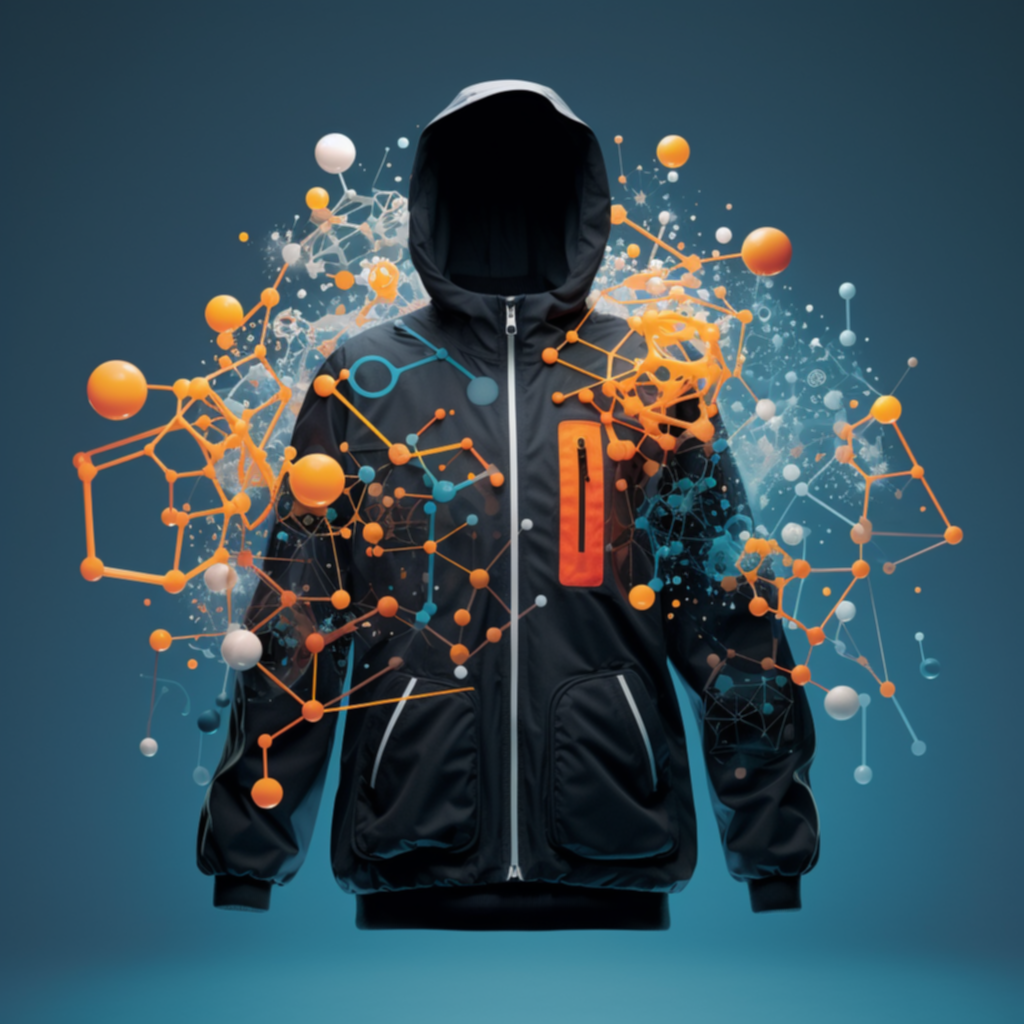Unlocking the Science Behind Waterproof Jackets: A Comprehensive Guide


Staying dry when the sky opens up isn't just about comfort; it can be a matter of survival. Waterproof jackets have come a long way, evolving from rudimentary designs to high-tech attire, thanks to scientific advancements. So, what's the science behind this essential piece of outdoor gear? This article aims to unmask the complexities and intricacies that go into creating waterproof jackets.
From the basic principles of waterproofing to the high-grade materials used, each aspect contributes to the jacket's performance. While some people might think a waterproof jacket is a simple layer of fabric, the reality is far more nuanced. We'll delve into how various materials like Gore-Tex and eVent work, and what those waterproof ratings on the labels actually mean. We'll also explore the durability concerns and how to sustainably care for these garments.
Engaging with the scientific aspects of waterproof jackets not only enhances your appreciation for these everyday items but can guide you in making informed choices. Whether you're an avid hiker or someone who simply wants to stay dry on a rainy day, understanding the mechanics can make all the difference.
History of Waterproof Fabrics
Long before the invention of high-tech materials, ancient civilizations were wrestling with the need to stay dry. The Egyptians utilized animal fats and oils to make their clothing water-resistant. Native Americans, on the other hand, employed natural rubber to waterproof items. However, it was in the early 19th century that the first true leap occurred in waterproofing technology.
Enter Charles Macintosh, a Scottish chemist. In 1823, he patented a method for making waterproof garments using rubber dissolved in naphtha. This led to the creation of the "Macintosh" raincoat, a name still synonymous with waterproof outerwear today. Despite its innovation, the Macintosh had its drawbacks; it was stiff, had an unpleasant odor, and often melted in hot weather. It took another century and the advent of synthetic polymers for the modern waterproof jacket as we know it to emerge.
The 1960s heralded the introduction of polyurethane, which provided a breathable yet waterproof solution. As technology continued to evolve, the 1970s saw the emergence of Gore-Tex, a revolutionary material that offered both waterproofing and breathability, addressing one of the most significant shortcomings of earlier designs.
The history of waterproof fabrics shows a constant drive to innovate, fueled by both human need and scientific advancement. Understanding this historical context enriches our appreciation of today's state-of-the-art waterproof jackets, which leverage cutting-edge materials and technology to keep us dry while offering improved durability, comfort, and environmental sustainability.

Basic Principles of Waterproofing
Waterproofing is not as straightforward as simply keeping water out. A good waterproof jacket must achieve a delicate balance between two factors: waterproofing and breathability. These elements are especially vital for active users, like hikers or mountain climbers, who generate sweat while battling the elements.
Hydrophobic vs. Hydrophilic
The cornerstone of waterproofing is based on the principles of hydrophobic (water-repelling) and hydrophilic (water-attracting) interactions. Hydrophobic materials repel water, causing it to bead up and roll off the surface. Hydrophilic materials, conversely, attract water molecules, but their unique structure allows them to channel the water away from the body, aiding in evaporation.
Water Column Test
Waterproof ratings are often determined through a water column test. In this test, a tube of water is placed over the fabric. The height of the tube (in millimeters) when the fabric begins to leak is its waterproof rating. For instance, a rating of 10,000mm means the fabric can withstand a 10,000mm column of water before leaking.
Breathability
Breathability refers to the ability of the fabric to allow moisture vapor (sweat) to escape. The challenge here is to create a membrane that is impermeable to liquid water but permeable to water vapor. Materials like Gore-Tex have achieved this feat through microscopic pores that are large enough to allow vapor to pass but small enough to prevent water droplets from entering.
Understanding these basic principles provides a foundation for diving deeper into the science of waterproof jackets. As we examine different materials and technologies, remember that the goal is always to balance waterproofing with breathability, ensuring optimal comfort and performance.
Materials and Technologies
In the world of waterproof jackets, a few key materials and technologies stand out for their superior performance and durability. Below, we'll explore some of these groundbreaking innovations.
4.1 Gore-Tex
Arguably the most well-known waterproof fabric, Gore-Tex was invented in 1969 by Wilbert L. Gore and Robert W. Gore. This material uses a membrane of expanded polytetrafluoroethylene (ePTFE), which has roughly 9 billion microscopic pores per square inch. These pores are 20,000 times smaller than a water droplet, effectively blocking it from penetrating the fabric. On the flip side, the pores are 700 times larger than a water vapor molecule, allowing for excellent breathability.
4.2 eVent
eVent is another high-performing waterproof fabric, introduced in the late 1990s. Unlike Gore-Tex, eVent utilizes a Direct Venting technology that doesn't require a polyurethane (PU) coating to be breathable. As a result, the fabric allows for more direct airflow, enhancing breathability while still keeping the user dry.
4.3 NeoShell
Developed by Polartec, NeoShell is a fabric that emphasizes both breathability and stretch, making it ideal for active pursuits. It employs a unique polyurethane membrane with a sub-micron level of porousness. This provides it with an air permeability of 0.1 CFM (cubic feet per minute), which strikes a balance between shielding against the elements and allowing for physical exertion.
4.4 Polyurethane Coatings
Polyurethane coatings are often applied to less expensive waterproof jackets as a cost-effective solution. These coatings are essentially painted onto the fabric, creating a waterproof barrier. However, PU coatings are generally less breathable than options like Gore-Tex or eVent.
Each of these materials and technologies has its own set of advantages and trade-offs. Understanding them helps consumers make more informed decisions based on their specific needs, whether they prioritize breathability, durability, or cost-effectiveness.
How Waterproof Ratings Work
When shopping for a waterproof jacket, you'll often encounter numerical ratings on the label, such as 10,000mm or 20,000mm. These figures can be mystifying, but they are crucial in understanding how well a jacket will perform under specific conditions.
The Water Column Test
As mentioned earlier, these ratings are usually derived from the water column test. A 1-inch diameter tube is placed on the fabric, and water is filled into this column. The point at which the fabric starts to leak is measured in millimeters, providing the waterproof rating. So, a 20,000mm rating means the material can withstand a 20,000mm tall column of water before it starts to leak.
Ratings and Real-World Application
- 0-5,000mm: Suitable for light rain and everyday activities but not recommended for heavy rain or active pursuits.
- 6,000-10,000mm: Good for moderate rain and light outdoor activities like hiking.
- 11,000-15,000mm: Excellent for heavier rain and moderate physical activity.
- 16,000-20,000mm+: Top-tier, best for extreme conditions and intense physical activity.
Breathability Ratings
Alongside waterproof ratings, you might also see breathability ratings, often measured in grams (g/m²/24hr). This tells you how much moisture vapor can pass through the fabric in 24 hours. Higher numbers signify better breathability. For example, a rating of 20,000g would be excellent for high-exertion activities, while a 5,000g rating is suitable for more sedentary use.
Limitations
It's important to note that while these ratings provide a guideline, they're not the end-all-be-all. Different brands might employ slightly varied testing methods, and real-world conditions can fluctuate wildly.
Understanding waterproof ratings and how they correlate with actual needs is crucial for consumers. These figures serve as a practical guide to what kind of weather conditions and activities a particular jacket is suited for, enabling more informed choices.
Durability and Sustainability Concerns
In the quest for the ultimate waterproof jacket, durability and sustainability often emerge as pressing issues. Let's delve into the factors that contribute to the long-lasting quality of these garments and explore how brands are grappling with their environmental footprint.
Durability Factors
- Seam Sealing: The waterproof quality of a jacket is only as good as its weakest point, often the seams. Taped or welded seams are crucial for preventing leaks.
- DWR Coating: Durable Water Repellent (DWR) is a coating applied to the fabric's exterior to encourage water to bead up and roll off. However, DWR wears off over time and needs to be reapplied.
- Material Thickness: A higher denier (unit of fabric thickness) usually translates to greater durability but may compromise breathability and comfort.
The Cost of Durability
Unfortunately, the elements that make a jacket durable, like high-denier fabrics and chemical coatings, can sometimes have environmental drawbacks. They may be resource-intensive to produce and contribute to pollution if not managed responsibly.
Towards Sustainability
In light of this, many brands are pushing towards greener alternatives. Here are some noteworthy advancements:
- PFC-Free DWR: Traditional DWR treatments often contained perfluorinated compounds (PFCs), which are detrimental to the environment. Now, many companies offer PFC-free DWR coatings.
- Recycled Materials: Brands like Patagonia are incorporating recycled polyester into their jackets to reduce the demand for new materials.
- Repair and Reuse: Offering repair services for worn-out garments extends their life cycle and reduces waste.
- Consumers increasingly consider sustainability in their purchasing decisions. Therefore, understanding the environmental impact of different materials and technologies
- can guide consumers in making choices that align with both their functional needs and ethical values.
Care and Maintenance
Proper care of a waterproof jacket is not merely a question of aesthetics; it's crucial for maintaining its performance over time. Lack of maintenance can lead to reduced waterproofing and breathability, thereby diminishing the jacket's effectiveness.
Regular Cleaning
Contrary to popular belief, regularly cleaning your waterproof jacket is essential. Dirt and oils can degrade the DWR coating, affecting its water-repellent properties. Most jackets can be machine washed on a gentle cycle with a mild detergent.
DWR Reapplication
Durable Water Repellent (DWR) coatings wear off over time due to use and cleaning. Fortunately, you can reapply these coatings at home using readily available DWR sprays or wash-in products. Follow the manufacturer’s instructions for best results.
Storing Properly
Always store your jacket in a dry and clean condition. Avoid packing it when it’s wet or dirty, as this can lead to mold, mildew, and eventually compromise its waterproof properties.
Zippers and Velcro
Don't overlook these parts, as they can also affect the jacket's performance. Keep the zippers clean and occasionally lubricate them with a silicone-based product. Velcro should also be cleaned to ensure it sticks as intended.
Repairing Tears and Holes
Minor damage doesn’t necessarily mean it’s time for a new jacket. Small tears can be patched up with repair tape or specialized adhesives. Some brands even offer repair services, which not only prolongs the life of your jacket but is also a more sustainable choice.
Taking time to properly care for your waterproof jacket ensures that it continues to serve its primary functions effectively. Proper maintenance prolongs the life of the garment, offering better value for your investment and reducing the need for frequent replacements, which is beneficial for both your wallet and the planet.
Making an Informed Purchase
Selecting the right waterproof jacket can be a daunting task given the myriad of options available. However, armed with the knowledge you've gained from previous chapters, you're better equipped to make an informed decision. Here are some final considerations to bear in mind when purchasing.
Activity Level
Firstly, consider the primary activity for which you'll be using the jacket. For high-exertion activities like hiking or mountaineering, breathability and weight are critical factors. For urban use or light walks, durability and style might take precedence.
Climate and Weather
Think about the climate in which you'll predominantly be using the jacket. A higher waterproof rating is essential for areas with heavy rainfall, whereas a lighter, more breathable fabric might suffice in milder conditions.
Budget
Price is an obvious but important factor. High-tech materials like Gore-Tex offer excellent performance but come with a premium price tag. Consider your budget in relation to how often and under what conditions you'll be using the jacket.
Fit and Comfort
Don't underestimate the importance of fit. A well-fitting jacket will not only be more comfortable but also more effective at keeping you dry. Make sure there's enough room for layering clothing underneath, but not so much that it leaves gaps for wind and rain to enter.
Brand Reputation
Lastly, consider the manufacturer's reputation for quality and customer service. Established brands often offer better warranties and return policies, adding an extra layer of security to your purchase.
With all these factors in mind, you’re ready to make a well-informed choice. Remember, the best waterproof jacket is the one that meets your specific needs, balancing functionality, comfort, and price.

Conclusion
Waterproof jackets are marvels of modern material science, balancing intricate trade-offs between waterproofing, breathability, durability, and environmental impact. Understanding the science and technology behind these garments can greatly assist in making an informed purchase and in caring for your jacket over its lifespan. With ongoing advancements in materials and sustainability practices, the future of waterproof jackets looks promising, continuing to keep us dry while pushing the boundaries of what’s possible.
Frequently Asked Questions (FAQs)
Q1: Can I wash my waterproof jacket in a regular washing machine?
A: Yes, most waterproof jackets can be machine washed on a gentle cycle using mild detergent. Always check the garment's care label for specific instructions.
Q2: How often should I reapply the DWR coating?
A: The frequency of reapplication depends on usage. Generally, you should reapply DWR when water no longer beads up on the fabric's surface.
Q3: Are higher denier fabrics always better?
A: A higher denier usually means greater durability but may compromise breathability and comfort. Choose based on your activity and comfort needs.
Q4: Is Gore-Tex the best waterproof material?
A: Gore-Tex is one of the most reputable waterproof materials, especially for high-exertion activities, but other fabrics like eVent and Polartec NeoShell also offer excellent performance.
Q5: Can I repair tears or holes in my waterproof jacket?
A: Small tears can be patched up with repair tape or specialized adhesives. Some brands even offer repair services, which can be a more sustainable option.
References
"How does eVent Technology Work?" - eVent Fabrics official website. https://www.eventfabrics.com/technology
"Waterproof Ratings and Breathability Guide" - REI Co-op. https://www.rei.com/learn/expert-advice/rainwear-how-it-works.html
"Environmental Impact of DWR Coating" - Environmental Science & Technology Journal. https://pubs.acs.org/doi/abs/10.1021/acs.est.7b00782






-500x500.jpg)
-500x500.jpg)
-500x500.jpg)
-500x500.jpg)
-500x500.jpg)